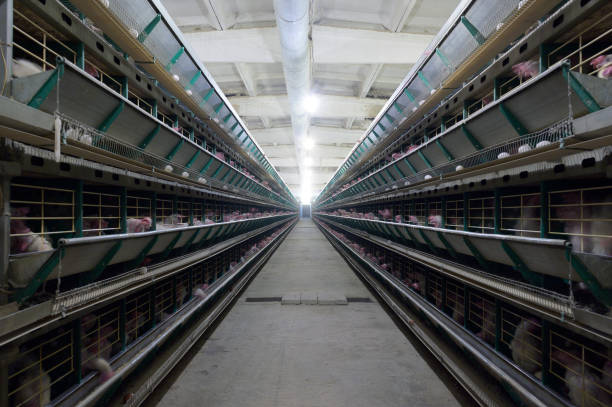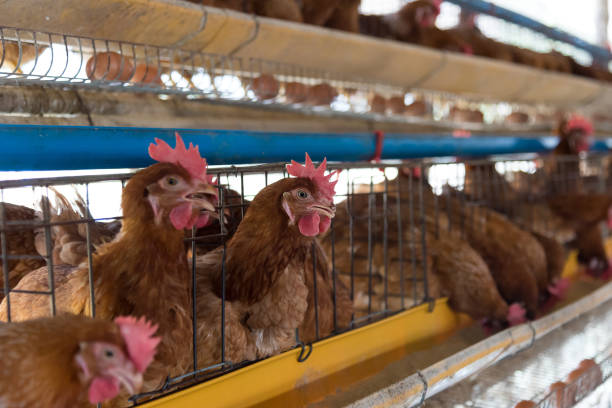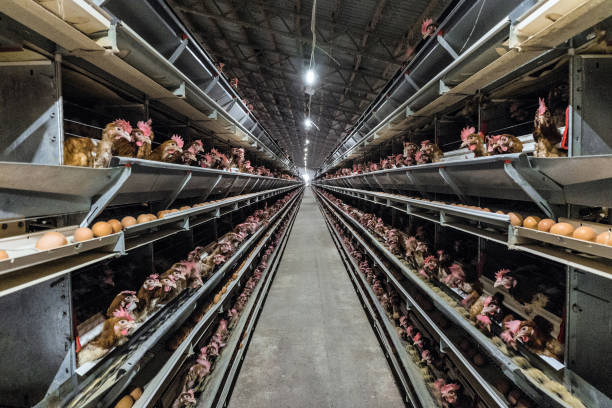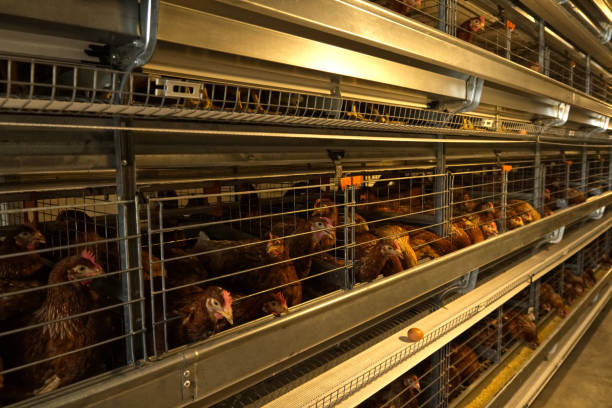
Investing in Automation: Decoding Automatic Poultry Cage System Prices in Africa
Investing in Automation: Decoding Automatic Poultry Cage System Prices in Africa
For poultry farmers in Africa looking to scale up their operations and boost efficiency, investing in an automatic poultry cage system can seem like a game-changer. But before diving in, understanding the pricing structure of these systems is crucial for making a financially sound decision. Let’s break down the various factors that influence the cost of automatic poultry cage systems in the African market and provide some practical advice for navigating the investment process.

Why Consider Automatic Poultry Cage Systems?

Before we get to the nitty-gritty of pricing, let’s briefly touch on the benefits that make automatic poultry cage systems an attractive investment. These systems automate key tasks such as feeding, watering, egg collection (for laying hens), and manure removal, which translates to:
Reduced Labor Costs: Automation significantly minimizes the need for manual labor, leading to long-term cost savings.
Improved Efficiency: Automated systems ensure consistent and timely feeding and watering, optimizing bird health and productivity.
Better Hygiene: Automated manure removal reduces the risk of disease outbreaks and improves the overall hygiene of the poultry house.
Increased Egg Production (for Layers): Reduced stress on hens and optimized living conditions lead to higher egg production rates.
Better Growth Rates (for Broilers): Optimized feeding and watering schedules promote faster and more uniform growth.
Ultimately, the goal of investing in an automatic system is to improve profitability and make your poultry farm more sustainable in the long run.
Factors Influencing Automatic Poultry Cage System Prices in Africa
Now, let’s get to the heart of the matter: the factors that determine the price of automatic poultry cage systems in Africa. These factors can be broadly categorized into system components, cage types, materials, automation level, manufacturer reputation, farm size, and installation and training costs.
System Components:
A complete automatic poultry cage system consists of several essential components, each contributing to the overall price. These include:
Cages: The cages themselves are the foundational component. Their size, design (number of tiers, cage dimensions), and material influence the price.

Feeding System: Automatic feeding systems distribute feed efficiently and uniformly. The complexity of the feeding system (e.g., chain feeding, auger feeding) affects the cost.
Drinking System: Nipple drinkers or cup drinkers provide a constant supply of fresh water. The type and quality of the drinking system impact the price.
Egg Collection System (for Layers): Automatic egg collection systems gently transport eggs from the cages to a collection point, reducing breakage and labor. The efficiency and design of the system play a role in the cost.
Manure Removal System: Automated manure removal systems, typically using scrapers or belts, remove waste regularly, improving hygiene. The type of manure removal system (e.g., belt system, scraper system) influences the price.
Ventilation System: Proper ventilation is crucial for maintaining air quality and temperature. Fans, air inlets, and climate control systems contribute to the price.
Control System: A central control system manages and monitors the entire operation, including feeding, watering, egg collection, and ventilation. The sophistication of the control system affects the cost.
Cage Types (Layer vs. Broiler):
The type of bird you’re raising – layers (egg-laying hens) or broilers (meat chickens) – significantly impacts the cage design and, consequently, the system price.
Layer Cages: Layer cages are designed to provide hens with comfortable living spaces and easy access to feed and water, while also facilitating egg collection. They typically include sloping floors for eggs to roll onto a collection belt. Layer cage systems tend to be more complex due to the egg collection component, which can lead to a higher price compared to broiler systems.
Broiler Cages: Broiler cages are designed to maximize space utilization and promote rapid growth. They often have simpler designs compared to layer cages, focusing on easy access to feed and water and efficient manure removal. However, the cage density and specific design features can still influence the overall cost.
Materials and Build Quality:
The materials used in the construction of the cages and other system components play a crucial role in determining the price and the system’s longevity.
Galvanized Steel: This is the most common material for poultry cages due to its durability and resistance to rust. Hot-dip galvanization offers better protection than electro-galvanization and therefore comes at a higher price. The thickness of the galvanized coating also impacts the price and lifespan of the cages.
Stainless Steel: Stainless steel is a more expensive option but offers superior corrosion resistance, making it ideal for humid environments. It is often used for critical components such as water lines and feeding troughs.
Plastic Components: Plastic is used for various components, such as drinkers, feeders, and egg collection belts. The quality of the plastic is important, as it needs to be durable and resistant to degradation from sunlight and cleaning chemicals.
Level of Automation:
The degree of automation is a major driver of price. Systems with fully automated feeding, watering, egg collection, and manure removal will naturally cost more than semi-automated systems.
Fully Automated Systems: These systems minimize manual labor and offer precise control over all aspects of poultry management. They are ideal for large-scale operations where efficiency and consistency are paramount.
Semi-Automated Systems: These systems may automate some tasks while requiring manual intervention for others. For example, feeding and watering may be automated, but egg collection or manure removal may be done manually. Semi-automated systems offer a balance between cost and efficiency, making them suitable for medium-sized farms.
Manufacturer Reputation and Brand:
Established manufacturers with a proven track record of quality and reliability often charge a premium for their products. However, this premium can be justified by the peace of mind that comes with knowing you are investing in a durable and well-supported system.
Local Manufacturers: Local manufacturers may offer more competitive prices and easier access to after-sales service and spare parts. However, it is important to carefully evaluate their quality and reliability.
International Manufacturers: International manufacturers often have a wider range of products and more advanced technology. However, their prices may be higher, and after-sales service may be more challenging to access in some African regions.
Farm Size and System Capacity:
The size of your poultry farm and the number of birds you plan to raise will directly impact the system’s capacity and, consequently, its price. Larger systems require more materials, more complex automation, and more powerful equipment.
Small-Scale Farms: Small-scale farms with a few hundred birds may opt for smaller, simpler systems with less automation to keep costs down.
Medium-Scale Farms: Medium-scale farms with a few thousand birds may benefit from semi-automated systems that offer a balance between cost and efficiency.
Large-Scale Farms: Large-scale farms with tens of thousands of birds typically require fully automated systems to maximize efficiency and minimize labor costs.
Installation and Training Costs:
Don’t forget to factor in the costs of installation and training when budgeting for your automatic poultry cage system.
Installation: Installation costs can vary depending on the complexity of the system and the availability of skilled labor in your area. Some manufacturers may offer installation services as part of the package, while others may require you to hire a local contractor.
Training: Proper training is essential for operating and maintaining the system effectively. Some manufacturers offer training programs for your staff, either on-site or at their facilities.
Getting the Best Price: Tips for African Poultry Farmers
Now that you understand the factors influencing automatic poultry cage system prices in Africa, here are some practical tips for getting the best possible deal:
Get Multiple Quotes: Contact several suppliers and request detailed quotes for your specific needs. Be sure to compare the specifications of each system carefully.
Negotiate Prices: Don’t be afraid to negotiate with suppliers. They may be willing to offer discounts or special deals, especially if you are purchasing a large system.
Consider Financing Options: Explore financing options such as loans or leasing to make the investment more affordable.
Prioritize Quality Over Price: While it’s important to stay within your budget, prioritize quality and durability over the lowest price. A cheaper system that breaks down frequently will end up costing you more in the long run.
Check References: Ask suppliers for references from other poultry farmers who have purchased their systems. Contact these farmers to get their feedback on the system’s performance and the supplier’s service.
Inquire About After-Sales Service: Make sure the supplier offers reliable after-sales service and spare parts. This is crucial for minimizing downtime and keeping your system running smoothly.
Research Local Regulations: Understand any local regulations or requirements related to poultry farming and ensure that the system you choose complies with these regulations.
Visit a Working Farm: If possible, visit a poultry farm that is already using the system you are considering. This will give you a firsthand look at how the system operates and its potential benefits.
Plan for Future Expansion: Consider your future growth plans when choosing a system. It may be more cost-effective to invest in a system that can be easily expanded in the future rather than having to replace it entirely.
Consider a Phased Approach: If your budget is limited, consider implementing automation in phases. For example, you could start with automated feeding and watering and then add automated egg collection and manure removal later.
Conclusion: Making an Informed Decision
Investing in an automatic poultry cage system is a significant decision that requires careful planning and research. By understanding the factors that influence pricing and following the tips outlined above, African poultry farmers can make informed decisions that will improve their efficiency, profitability, and sustainability. Remember to prioritize quality, reliability, and after-sales service to ensure that your investment pays off in the long run. The future of poultry farming in Africa is looking bright, and automation is set to play a significant role in shaping that future. Good luck with your investment!
